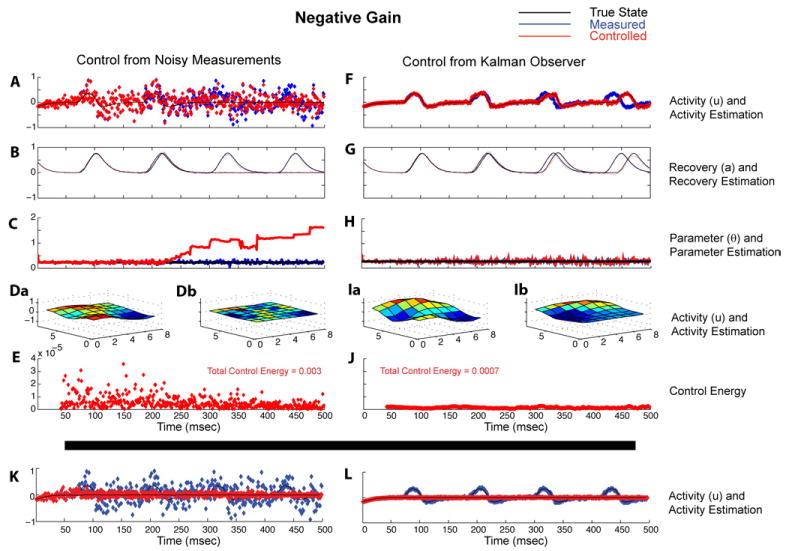Figure 4.

Comparison of the use of negative gain proportional control calculated directly from high noise observations, left column (A)–(E), and from the Kalman observer, right column (F)–(J). (A) Output variable yi from the single element of grid, same as in figure 1(G). The variables in this figure are similar to the description for figure 3. Note that with control derived from the Kalman observer (right column), that negative gain in high noise conditions stably slows the frequency of the spiral, and requires considerably less control energy, than the unstable case where the direct proportional control is calculated from the noisy observations (left column). Below the heavy black line, are shown results at an increased amplitude of negative gain illustrating that with sufficient negative gain (a 10-fold increase in gain compared with (A)), the proportional control calculated directly from high noise observations, (K), or from the Kalman observer (L), completely quenches the wave activity.
